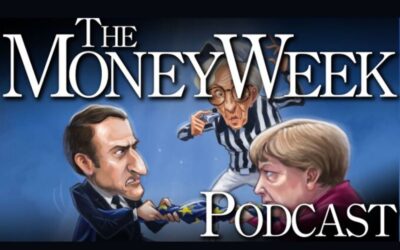10/09/20204 mins
Money printer goes brrr… but what about inflation?
The word ‘unprecedented’ is cropping up everywhere these days. Perhaps at an unprecedented rate. It’s not hard to see why, of course – the circumstances we find ourselves in today have provoked change at breakneck speed. Consider, for example, the optimistic outlook late last year. Then, markets took comfort from a UK general election outcome that put to bed the threat of unrestrained government spending. Now, it is a welcome relief to see the government paying a good proportion of the country’s wages. But will the unprecedented actions around the world today lead to a potentially insidious threat to wealth: inflation.
The people’s QE
Admittedly, the prospect of inflation in the near-term divides opinion. As things stand, the destruction of demand for consumer goods and services – airlines, retailers and hospitality, to name a few – is deeply deflationary. But there’s a confluence of factors that could drive up inflation in the not-too-distant future.
The first inflationary factor to consider is the staggering amount of new money which has been created as a result of government interventions worldwide. The US, for example, is spending trillions of dollars to support its economy. But how is this being paid for? Such a burden on the taxpayer would be far too great to bear, of course. In reality, this spending is made possible by ‘money printing’ (or quantitative easing to give it its technical term). A significant portion of the US government’s spending has been facilitated by the Federal Reserve this year. This flood of new money deployed into the economy means more money competing for goods and services, in turn pushing up prices. This creeping diminution of purchasing power is, superficially, more palatable than levying additional taxes.
Politics is at play here. Politicians, who universally want to be re-elected, are not prepared to make any tough, unpopular decisions – such as turning off the money printer that has facilitated huge government support. In the UK, with a large proportion of the workforce and electorate having been furloughed, money printing fuelled spending has popular backing. It not only provides welcome relief for those that might otherwise have lost their jobs, but preserves economic capacity and spending power, heading off the threat of deflation. However, such policies can become addictive, and some politicians have proposed bolder forms of stimulus that inject money directly into the consumer’s pocket – often dubbed ‘the people’s QE’.
A shift from China
A second inflationary factor exposed by the pandemic is the fragility of corporate supply chains, particularly those that are reliant on China’s low waged manufacturing base, which may now need to be re-engineered. Rising tensions between China and the US look set to exacerbate this trend. President Trump has publicly blamed China for the pandemic and has encouraged US businesses to reduce their dependence on Chinese suppliers. A large shift in manufacturing from China would require companies to make significant adjustments, inevitably increasing costs which would push prices up.
The after-effects of Covid-19 are the third factor likely to influence pricing going forward. If airlines, for example, are compelled to fly half-empty, that will lead to more expensive tickets. Can bars, restaurants and cinemas make money at current prices if forced to operate at reduced capacity? In these instances, higher prices will weigh on demand, unless wages keep up, which, in essence, is the definition of inflation.
Old patterns reassert themselves
Governments can never openly own up to the fact that they would like to generate a bit of inflation. But from their perspective, it is the least painful way to dilute the burgeoning debt pile. Instead of openly targeting inflation they implement policies that should, ultimately, generate it.
Despite that, price increases have remained modest, even in the face of massive quantitative easing and low interest rates. What’s kept prices in check? One of the principal factors, in the lack of inflation to date, is the availability of cheap goods from China and beyond. Continued loose fiscal and monetary policy, coupled with the manufacturing shift toward higher cost producers, may well tip the balance in favour of the inflation that authorities secretly crave.
Opportunities for investors
The global economy is showing some signs of bottoming and, in the absence of a major flare up, we are probably past the worst of the pandemic. Markets have responded well to this incremental good news – stockmarkets are near all-time highs. However, the recovery in financial markets has been largely confined to a handful of stocks that have been winners from ‘stay at home’ orders. The real-world recovery is still very much underway, and the shares of many companies exposed to that revival are still some way below their previous levels.
Despite the tough near-term outlook for earnings, these value-type stocks are often best positioned for periods of sustained inflation.
If, and when, inflation does resurface, gold should prove to be an excellent inflation hedge. That’s one reason that we have exposure to some of the world’s top gold miners in our portfolio.
It may take some time for the effects of the pandemic to fully mend, but we see many underappreciated contrarian investments that can participate in the next leg of the recovery.
August 2020
Please remember that past performance may not be repeated and is not a guide for future performance. The value of shares and the income from them can go down as well as up as a result of market and currency fluctuations.
The Scottish Investment Trust PLC has a long-term policy of borrowing money to invest in equities in the expectation that this will improve returns for shareholders. However, should markets fall these borrowings would magnify any losses on these investments. This may mean you get back nothing at all.



